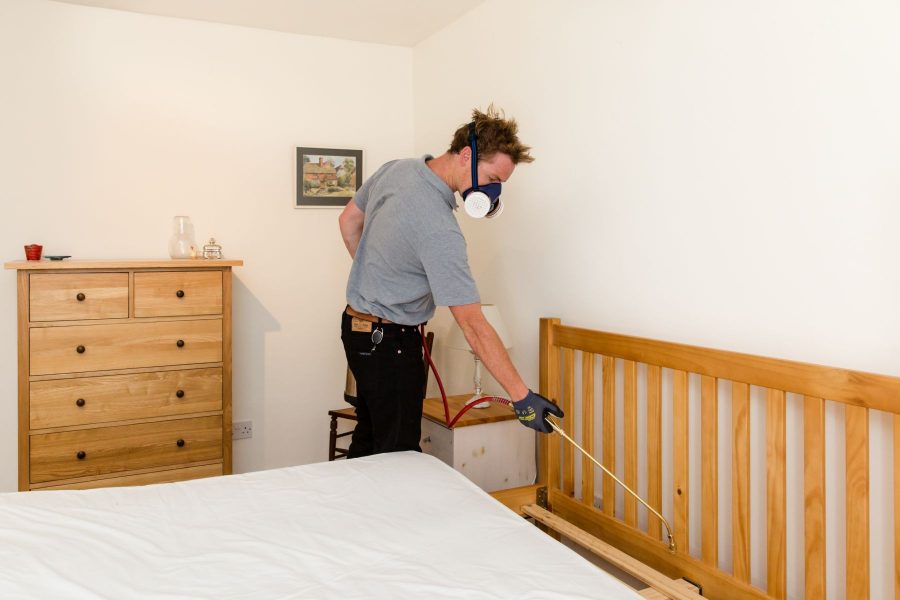
Image Source: Google
There's nothing worse than lying in bed at night, only to feel the unmistakable pinch and itch of a bed bug bite. These tiny pests can quickly turn your peaceful night's sleep into a nightmare. However, by conducting a thorough bed bug inspection service, you can rest easy knowing your sleep environment is free from these unwanted intruders.
Step 1: Know the Signs
The first step in conducting a bed bug inspection is to familiarize yourself with the signs of an infestation. Common signs include:
Small blood stains on your bedsheets or pillowcases
Dark spots (bed bug excrement) on your mattress or furniture
Shed bed bug skins
A musty odor in your bedroom
Visible bed bugs or their eggs
If you notice any of these signs, it's important to take immediate action to prevent the infestation from spreading.
Step 2: Strip Your Bed
Next, remove all bedding, including sheets, pillowcases, and mattress covers. Be sure to launder them on the hottest setting recommended for the fabric. This will kill any bed bugs that may be hiding in the bedding.
Step 3: Inspect Your Mattress
With the bedding removed, carefully inspect your mattress for any signs of bed bugs. Start by examining the seams, tufts, and edges of the mattress. Look for any dark spots or shed skins, as these are common indicators of an infestation. Pay close attention to the corners and crevices where bed bugs often hide.
If you have a box spring, be sure to inspect it as well using the same method. Additionally, check any nearby furniture, such as nightstands or dressers, as bed bugs can easily travel between these items.
Step 4: Check the Bed Frame and Headboard
After inspecting the mattress and box spring, move on to your bed frame and headboard. Bed bugs can hide in cracks and crevices, so be sure to thoroughly examine these areas. Use a flashlight to help you see into tight spaces, and pay special attention to any joints or screw holes.
If you notice any signs of bed bugs, such as dark spots or live bugs, it may be necessary to take more aggressive measures, such as contacting a professional pest control company.
Step 5: Look for Telltale Signs Around the Room
Bed bugs are not limited to your bed; they can also hide in other areas of your bedroom. Inspect any upholstered furniture, such as chairs or couches, as well as curtains and rugs. Look for the same signs you observed on the mattress, including dark spots, shed skins, and live bugs.
Don't forget to check the cracks and crevices of baseboards, electrical outlets, and picture frames as well. Bed bugs can hide in these areas and easily go unnoticed.
Step 6: Take Preventive Measures
Even if you don't find any signs of bed bugs during your inspection, it's still important to take preventive measures to keep them at bay. Consider using mattresses proof mattresses and pillow encasements, which can help prevent bed bugs from infesting these areas.
Regularly vacuum your bedroom, paying close attention to cracks, crevices, and upholstered furniture. Dispose of the vacuum bag or empty the canister in an outdoor trash bin immediately to prevent any captured bed bugs from reinfesting your home.
Rest Easy and Sleep Tight
By following these steps and conducting a thorough bed bug inspection, you can rest easy knowing that your sleep environment is free from these bothersome pests. If you do discover an infestation, don't hesitate to seek professional help to ensure a complete eradication. With a little diligence, you can enjoy a peaceful night's sleep once again.
/cdn.vox-cdn.com/uploads/chorus_image/image/51867435/Eli_Preferred_Headshot.0.jpeg)